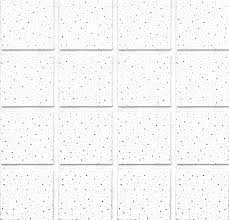- Afrikaans
- Albanian
- Amharic
- Arabic
- Armenian
- Azerbaijani
- Basque
- Belarusian
- Bengali
- Bosnian
- Bulgarian
- Catalan
- Cebuano
- Corsican
- Croatian
- Czech
- Danish
- Dutch
- English
- Esperanto
- Estonian
- French
- German
- Greek
- Hindi
- Indonesian
- irish
- Italian
- Japanese
- Korean
- Lao
- Malay
- Myanmar
- Norwegian
- Norwegian
- Polish
- Portuguese
- Romanian
- Russian
- Serbian
- Spanish
- Swedish
- Thai
- Turkish
- Ukrainian
- Uzbek
- Vietnamese
Ira . 13, 2024 15:55 Back to list
frp ceiling grid
Understanding FRP Ceiling Grid A Comprehensive Overview
FRP (Fiber Reinforced Polymer) ceiling grids have emerged as a popular choice in modern construction and design. These innovative products offer a variety of advantages over traditional materials, making them ideal for numerous applications, particularly in environments requiring durability and corrosion resistance.
What is FRP?
Fiber Reinforced Polymer is a composite material made of a polymer matrix reinforced with fibers. These fibers can be made of glass, carbon, or aramid, providing enhanced strength while remaining lightweight. The unique properties of FRP make it particularly suitable for ceilings in settings ranging from industrial facilities to commercial spaces.
Advantages of FRP Ceiling Grids
1. Durability One of the most significant benefits of FRP ceiling grids is their exceptional durability. They are resistant to moisture, chemicals, and UV light, which makes them suitable for areas such as food processing plants, laboratories, and even outdoor settings. This resistance extends the lifespan of the ceiling grid beyond that of traditional materials, reducing maintenance costs and the need for frequent replacements.
2. Lightweight FRP ceiling grids are considerably lighter than traditional metal grid systems. This lightweight nature simplifies installation, as less structural support is needed. Contractors can save time and labor costs during the installation process, making FRP an economically attractive option for builders.
frp ceiling grid

3. Aesthetic Versatility FRP materials can be molded into various shapes and finishes, offering architects and designers flexibility in achieving desired aesthetics. They can mimic the appearance of wood, metal, or other materials, allowing for creative freedom in interior design while maintaining functional performance.
4. Corrosion Resistance In environments exposed to harsh chemicals or high humidity, traditional materials can corrode and degrade over time. FRP ceiling grids, on the other hand, remain unaffected by these elements, making them particularly useful in industries like pharmaceuticals, food and beverage, and chemicals.
5. Thermal and Acoustic Properties Many FRP ceiling grids are designed to offer thermal insulation and sound absorption. This can contribute to energy efficiency in buildings and create more comfortable environments by reducing noise levels.
Applications of FRP Ceiling Grids
FRP ceiling grids can be utilized across various sectors. In industrial settings, they are ideal for areas such as warehouses and manufacturing plants where exposure to chemicals is common. Commercial spaces like shopping malls and restaurants benefit from the aesthetic appeal and durability of FRP. Moreover, healthcare facilities often choose FRP for its hygienic properties, as it minimizes the growth of mold and bacteria.
Conclusion
In conclusion, FRP ceiling grids represent a significant advancement in construction materials, offering unparalleled benefits that address the demands of modern design and construction. Their durability, lightweight nature, aesthetic flexibility, and resistance to corrosive substances position them as a superior choice in many applications. As the construction industry continues to evolve, the adoption of materials like FRP will undoubtedly play a crucial role in enhancing building performances and the overall quality of the built environment. Whether it is a new commercial property or an industrial facility, FRP ceiling grids present an innovative solution to traditional challenges, paving the way for smarter, more efficient construction practices.
-
Transform Interiors with PVC Gypsum Ceiling: A Stylish, Durable, and Moisture-Resistant SolutionNewsMay.19,2025
-
The Smart Interior Upgrade: Discover the Durability and Versatility of Gypsum Ceiling Access Panel SolutionsNewsMay.19,2025
-
The Smart Choice for Interior Design: Discover the Value of PVC Gypsum Ceiling SolutionsNewsMay.19,2025
-
Mineral Fiber Ceiling Tiles: The Smart Blend of Performance and AestheticsNewsMay.19,2025
-
Mineral Fiber Ceiling Tiles: The Superior Choice Over Gypsum for Sound and Fire SafetyNewsMay.19,2025
-
Mineral Fiber Ceiling Tiles: Eco-Friendly Strength and Style for Every CeilingNewsMay.19,2025







